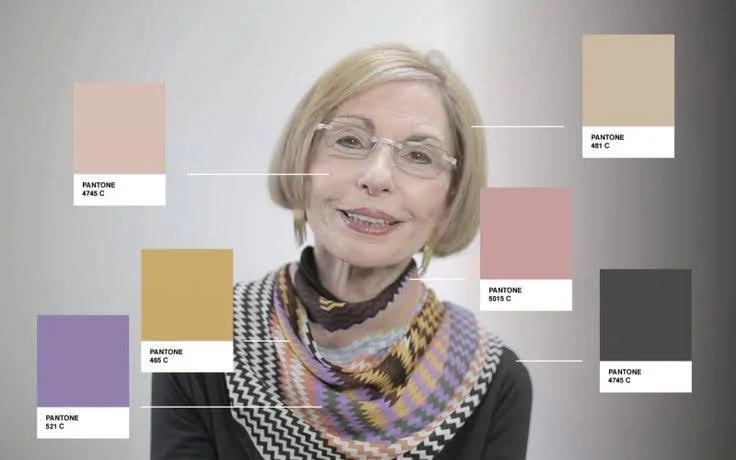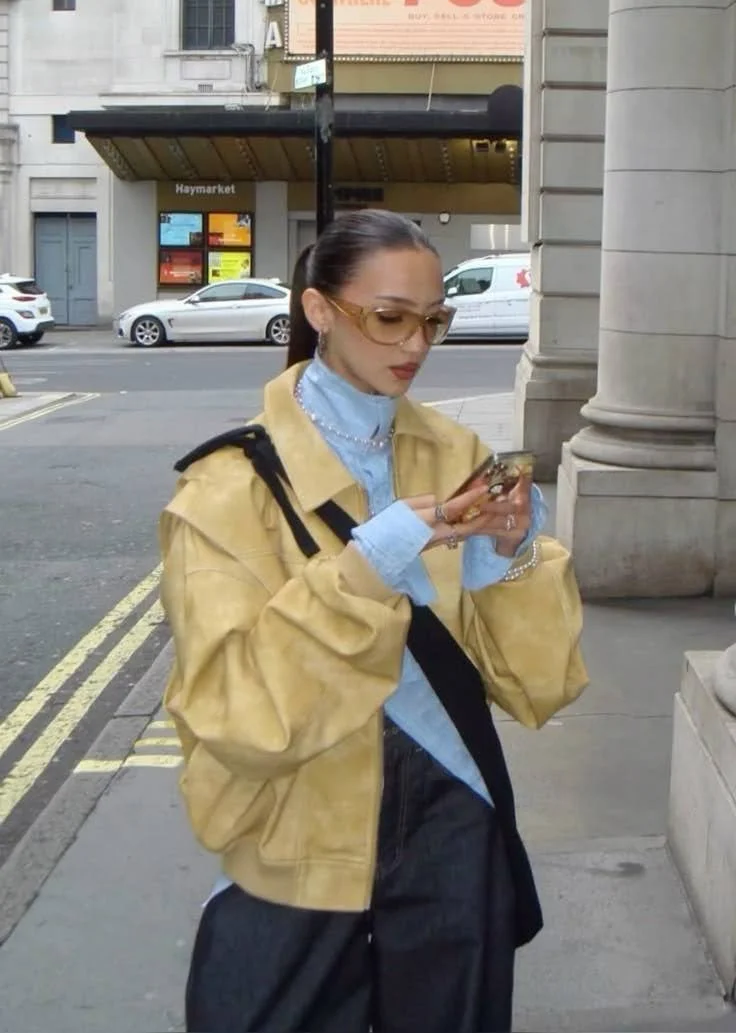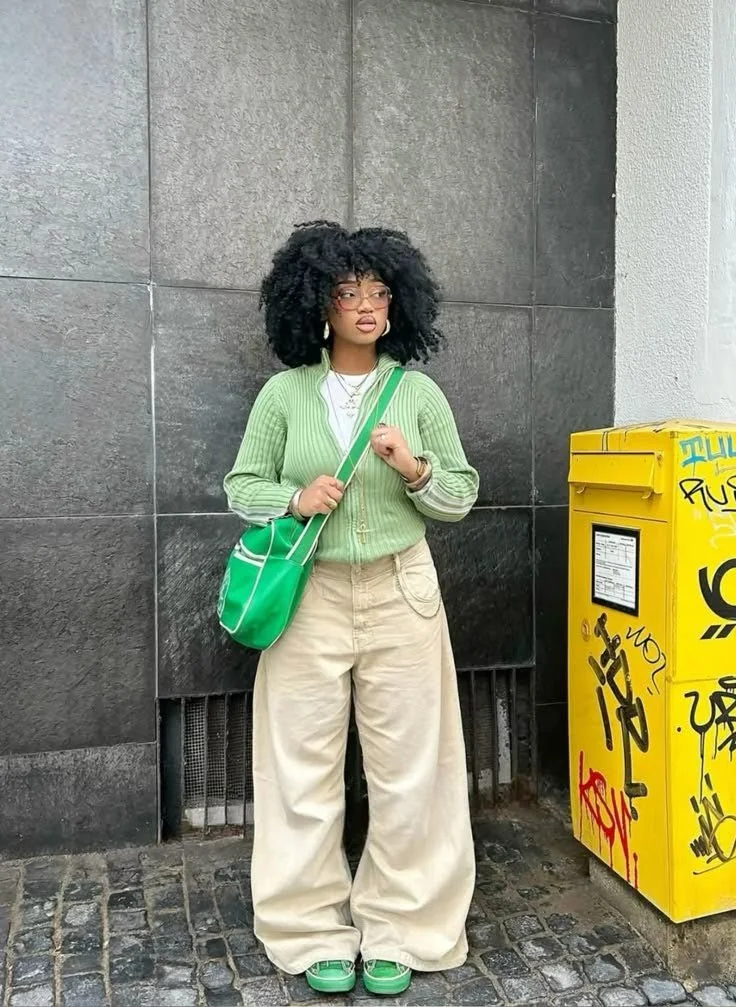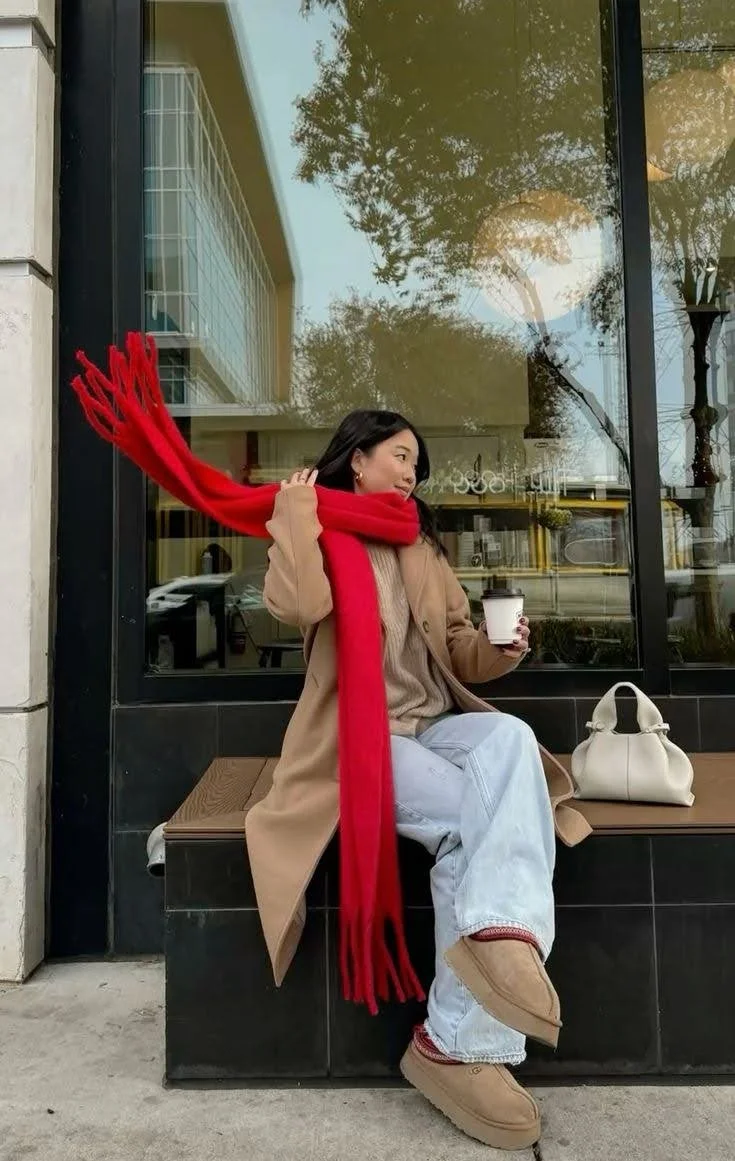Dopamine Through Fashion: Cure the Winter Blues with Color!
Written by Ruby Her
By midwinter, even the most vibrant city lights start to look like they have been washed in one too many cold cycles. While the snow takes up all the space in our minds, people begin to blur into thick, black coats, the sky settles into a permanent grayscale, and every morning happens to feel like a photocopy of the one that came before it. It is days like this that color seems to be drained out of everything except, perhaps, the inside of our closets, full of quiet archives of vibrant hues waiting to increase our dopamine levels.
It is no surprise that our moods mimic the landscape. When we least expect it, the “winter slump” or most notably, “seasonal depression,” creeps in and takes possession of our daily perspectives. The little access to the sunlight tinkers with our chemistry: serotonin slips, melatonin climbs, and dopamine, our feel-good motivator, slips through the cracks.
This introduces us to the secret world of strategic dressing to increase our dopamine: an unexpected, yet powerful idea that what you wear can coax your brain into feeling brighter, more energized, and most importantly, more you! Not through trends or shopping sprees, but primarily through the transformative potential of color.
Leatrice Eiseman, the director of the Pantone Color Institute and “America’s color guru,” has long insisted that color remains to be the single most important piece to establishing a mood (West, 2020). As a psychologist and theorist, she has spent years mapping the emotional undercurrents of hue. In fact, she insists that humans respond to color in ways that are both deeply biological and astonishingly intimate. Bright yellows echo the warmth of sunlight, greens whisper renewal, reds ignite a spark of confidence, and blues mirror a calm the way a quiet lake does.
Without the stimulation of spring blooms or summer skylines, our body grows hungry for color and something vivid to break through the seasonal dullness. The mind, deprived of sensory richness, begins to dim. But, in the winter, these emotional cues tied to these hues become especially vital.
Let us consider the simple act of putting on a bold yellow sweater on a mid-January morning—chances are that you begin to feel warmer and livelier, as if you smuggled a sense of sunrise into your pocket. The shade doesn’t just brighten your outfit; it alters your internal warmth. Yellow, Eiseman explains, carries “cheerful, enlightenment, and warmth.”
Now, picture choosing emerald green when the world outside feels dead and dormant. Green carries the memory of life, leaves, growth, and overall, elements of nature pushing towards the sun. It is a color rooted in restoration, so when you wear it, expect it to feel like a return of life, or spring, even if the trees insist otherwise. Next time you are going out, consider rocking that green piece in your closet—it could be that cardigan or statement bag you have not worn yet. If worse comes to worse, do not underestimate how a great pair of green socks or stockings could make your outfit pop!
Red, on the other hand, is a color you may find to behave differently. Red refuses to blend into the winter’s muted palette; instead, it burns like a flaming fire. Studies on color and physiology have shown that red can actually raise heart rate and spike alertness, a natural ignition switch for days where you feel like you need jumper cables just to get out of bed. In the bleak midwinter, red becomes more than a color, but rather, courage. So, consider a fierce scarf to spark a flame full of passion, confidence, and vibrancy within your day.
Blue, by contrast, is winter’s balm: cool, but not cold. Think of slipping into a soft blue sweater on a day when the sky feels heavy and close. This impact can feel like placing an ice pack on a fever: soothing, clarifying, and, especially, restorative. Even a simple accessory, such as sapphire earrings or a wool beanie, can create a pocket of peace.
The painter, Wassily Kandinsky, once wrote, “Color is a power which directly influences the soul” (Marinho, 2021). Through the lens of artistic psychology, this ideology emphasizes that color manages to reach us at a level beyond language. It bypasses logic and speaks straight to the emotional centers of the brain. For this reason, in the winter time, when our internal landscapes feel muted, color becomes nourishing.
This is why the quiet thrill of slipping into something bright or unexpected feels so disproportionately uplifting during the cold months. When the world outside loses its color, adding it back through our own clothing becomes a tiny act of joy.
With all of this in mind, imagine a slate-grey February afternoon. You wrap yourself in a scarf the color of fire, unapologetically orange and blazing against the frost. The moment you catch your reflection in a shop window, something inside you lifts. The color acts as a spark, a warm pulse against the winter numbness. This is sensory psychology and emotional strategy. Even a small touch of color can act as a nudge toward feeling more present and energetic. A bright beanie, a jewel-tone coat, or even a swipe of bold lipstick; these pops of color are small steps toward an infusion of pleasure and possibility.
Winter may diminish the world to shades of grey, but this does not mean you are not required to blend in. Through your own closet and creativity, you can curate your emotional climate, stitch by stitch, even when the season offers you only clouds.
Edited by Ana Massoglia and Gabi Beard
Sources:
https://leatriceeiseman.com/color-is-key-to-creating-moods/.





